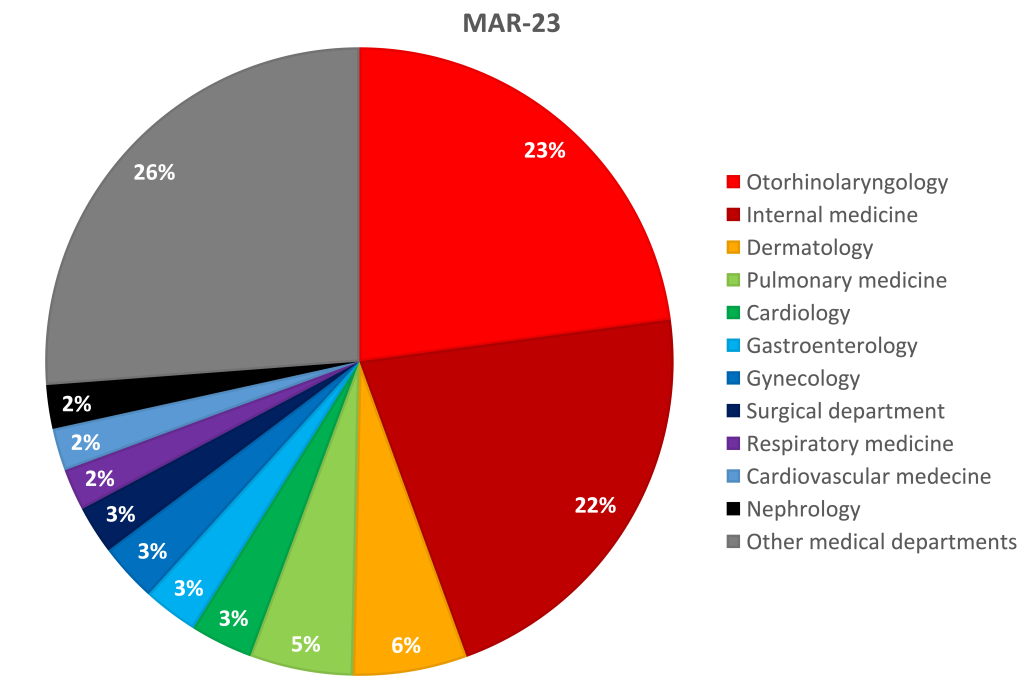
Unveiling Prescription Trends for Antihistamines for Allergic Rhinitis Patients: Insights from Medical Data Vision
As the pollen season arrives, affecting many once again, the struggle with allergic rhinitis (hay fever) persists. While this year is anticipated to witness a decrease in pollen dispersion compared to the explosive levels reported last year for cedar and cypress pollen, it remains a challenging time for those afflicted with hay fever.
Hence, this month, we delve into the prescription patterns over the past three years for antihistamines (oral medication) targeting outpatient allergic rhinitis patients aged 20 and above (J30: vasomotor and allergic rhinitis <nasal allergy>) during March, the peak season for pollen allergy sufferers. (Top 10 medications)

*Target Medical Institutions: Actual Patient Count (429 facilities, 14,446,110 individuals)
Target Period: March 2021 to March 2023 (hospitals with complete data for the specified months only)
The top-ranked medication was Fexofenadine Hydrochloride (mainly known as Allegra), followed by Bilastine (mainly known as Bilanoa).
Furthermore, the patient distribution by specialty in March 2023 is as follows, with otolaryngology and internal medicine registering significantly higher patient numbers.

We then checked to see if there were any differences in prescribed drugs among the top four departments. The results showed that the number one prescribed drug differed among otorhinolaryngology departments.

Note: This article was published on March 1, 2024.
Data survey and analysis tailored to your specific requests
Databases, data analysis requests, and more.
© Medical Data Vision Co., Ltd. All Rights Reserved.





